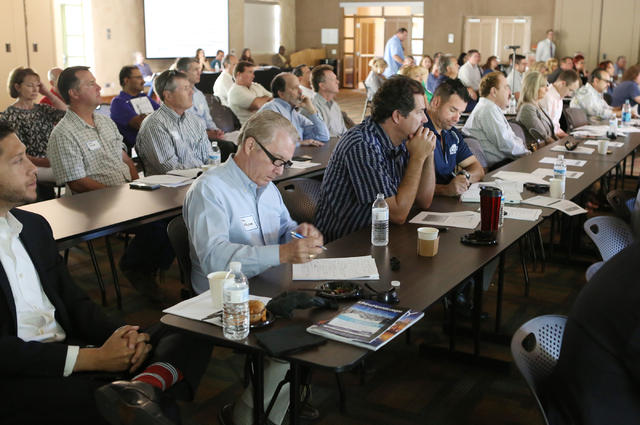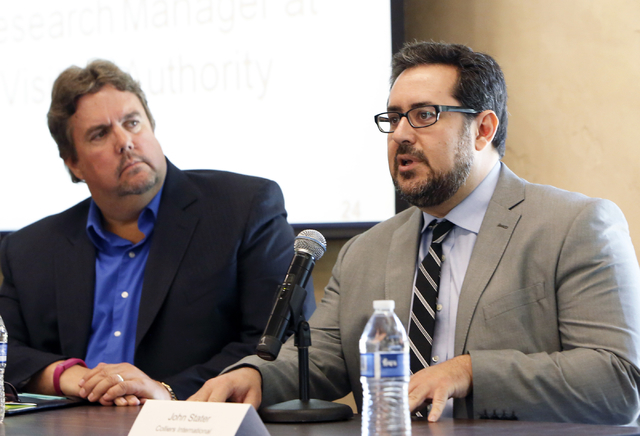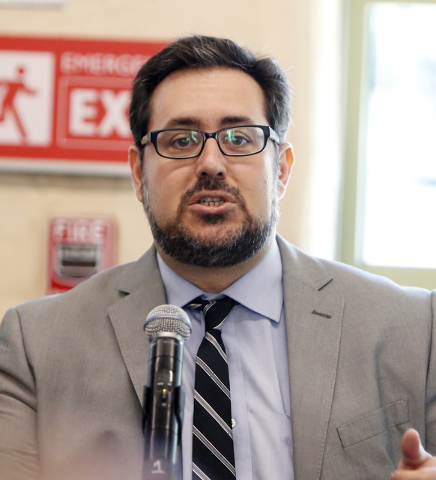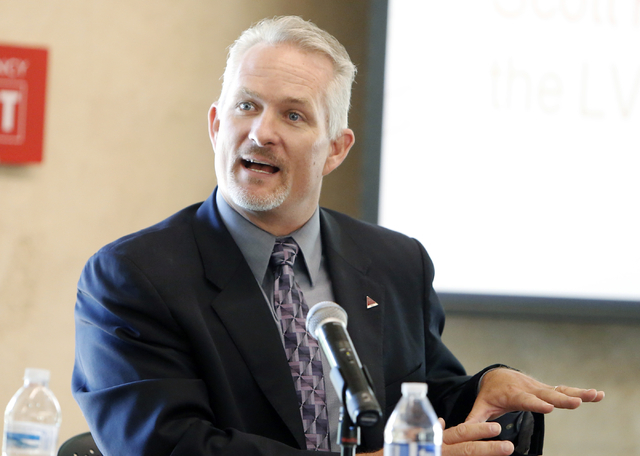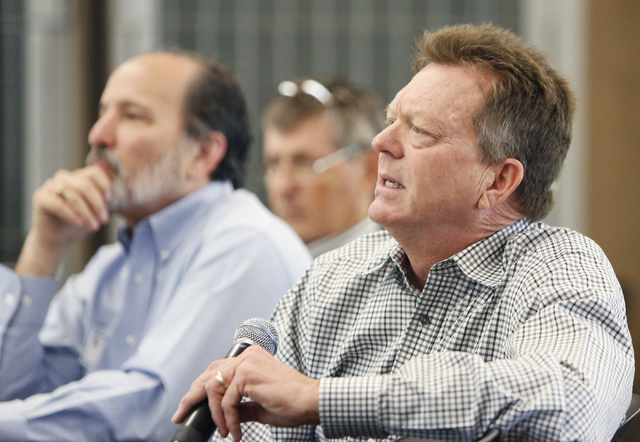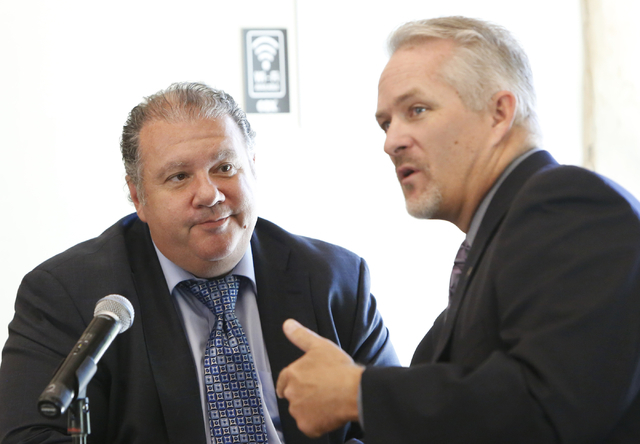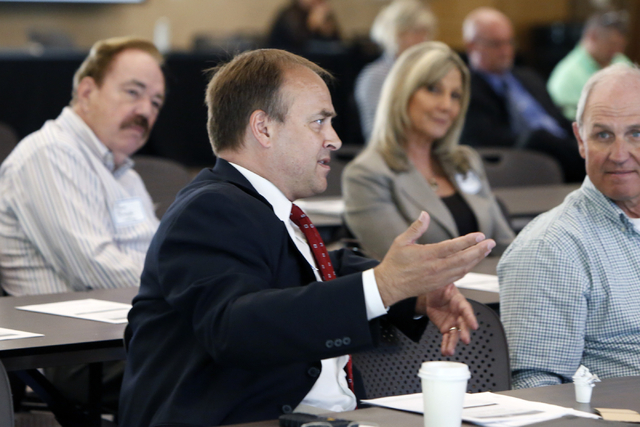Vegas housing market to make respectable gains
Southern Nevada’s middling housing market will make decent if unimpressive gains in the next 18 months.
That was the word Friday from a panel of observers at the spring Las Vegas Housing Outlook, held by local analysis firm Home Builders Research.
From closings to permits, housing indicators stayed steady or advanced in the first part of 2015. Whether those trends continue depends on larger economic factors.
Start with those indicators.
Weekly net sales enjoyed a brisk start to 2015, spiking in the first quarter to one sale per subdivision. That compares to a national norm of 0.7 sales per subdivision.
The local sales rate had slipped by May 24 to that 0.7 rate — exactly even with levels a year ago, said Dennis Smith, president of Home Builders Research. Still, that number should tick back up after summer, following a spate of community openings, Smith said.
Closings, or completed sales, were up year over year in April, improving 7.4 percent to 449 units. Builders are on track to close at least 6,400 units in 2015, up 6.3 percent from 6,020 in 2014. Based on the number of lots available, closings could reach 7,000 in 2016.
The median price increased on pace with other measures, improving by 7.5 percent year to year in April to $305,704. Prices should keep trending upward because of a relatively limited supply of land, plus a persistently low rate of notices of default against delinquent homeowners. Sluggish foreclosure rates should keep a lid on potential “shadow” resale inventory, Smith said. Monthly local notices of default remain less than a quarter of their rates in 2011 as a result of state laws that toughened requirements on banks looking to foreclose.
Despite land constraints, builders are scrounging up enough lots to post a “nice rise” in permitting activity, Smith said. Builders pulled 6,632 permits in 2014, and they’re on pace to pull at least 7,300 in 2015, for a 10 percent gain. Look for another jump, to 8,000 permits, in 2016. That’s well below a 2004 permitting peak of nearly 33,000 units in 2004, but an improvement on 2011’s 3,700-permit low.
The market’s gains come in part from economic recovery. At more than 3 percent, the Las Vegas Valley’s job growth is roughly double the national rate. The population is growing as well. Affluent baby boomers in particular are relocating with cash in hand to spend in the move-up housing market, Smith said.
The city’s economic expansion is set to continue, at least in the near term: There’s roughly $9 billion in new building projects and renovations planned across the valley in the next three years, said outlook panelist Scott Russell, senior manager of research for the Las Vegas Convention and Visitors Authority.
That’s not to say it’s only onward and upward for housing and the local economy.
First, experts are eyeing affordability. Wage growth has mostly been flat, even as home prices have surged by double digits since 2012.
Rising interest rates could complicate the outlook as well. Panelist Michael Sweeney of Alpine Mortgage said the Federal Reserve will likely boost interest rates by half a percentage point before the end of 2015.
“We’ll see how the world reacts,” Sweeney said.
Panelist Mike Brunson, of Las Vegas real estate consulting firm Brunson-Jiu, said he doesn’t expect substantial falloffs in borrowing activity.
“They’ve been floating an increase for four or five years now, so interest rates have to go up. I think initially, people will freak out and act like the sky is falling, but then everyone will say, ‘Well, this kind of had to happen,’” Brunson said.
More broadly for local economic expansion, diversification has been trickier than expected, said panelist John Stater, research and GIS manager in the Las Vegas office of commercial brokerage Colliers International. Despite a recent flurry of interest in broadening the region’s industrial base, Southern Nevada appears to be falling back once again on hospitality and growth-centric sectors.
“I don’t know how much diversification you can really do,” Stater said. “The question everyone asked when the economy collapsed was, ‘What will we look like five, six or seven years from now?’ What we see is that we’re heavily reliant on gaming, and construction is starting to come back as well.”
And though some commercial real estate sectors are bouncing back — local industrial developers in particular are poised to roll out as much as 5 million square feet in speculative space in coming years — other pockets continue to struggle, Stater said. The office market’s vacancy rate is still around 20 percent, and there’s no need for new development anytime soon as technology changes the nature of work and companies need less space per employee.
Contact Jennifer Robison at jrobison@reviewjournal.com. Find @J_Robison1 on Twitter.



